Another variation of the famous binagoongang baboy Filipino dish, the binagoongang manok or chicken with shrimp paste is a very good alternative. This recipe replaces the pork used in the original dish if there are no pork available in your area. Or if you just want to avoid pork you can enjoy this binagoongan dish.
Binagoongang Manok: A Flavorful Twist on a Classic Dish
I still remember the first time I tasted binagoongang manok. It was during one of our family visits to my Auntie Lita in Batangas, where every meal felt like a grand feast. She was known for her mastery of home-cooked Filipino dishes, and whenever we visited, she would always whip up something special. That day, she surprised us with her own take on binagoongan—but instead of the usual pork, she used chicken. I was skeptical at first, wondering if it could ever match the rich, savory taste of the traditional version. But after one bite, I was hooked.
A Delicious Alternative to Binagoongang Baboy
Binagoongang baboy has long been a staple in Filipino households. Its bold flavors, the combination of salty, umami-packed shrimp paste and tender pork, make it a favorite among many. However, not everyone can enjoy pork, whether for dietary reasons or availability. This is where binagoongang manok comes in. By using chicken, you still get the deep, savory goodness of the dish but with a lighter, leaner protein. It’s a wonderful way to enjoy this Filipino favorite without feeling too heavy afterward.
The Secret to the Best Binagoongang Manok
The beauty of this dish lies in the balance of flavors. Auntie Lita always said that the secret to a great binagoongan dish is patience and the right technique. When I started making it on my own, I followed her advice religiously.
First, she taught me to pan-fry the chicken until golden brown before adding it to the sauce. This technique helps seal in the juices, keeping the meat tender and flavorful. I once skipped this step out of impatience, and the result was a rubbery, less appetizing dish. Since then, I always take my time with this process, just like she did.
Then there’s the shrimp paste—or bagoong alamang, as we call it. Auntie Lita always made sure to saute it well with garlic and onions before adding the chicken. This step deepens the flavor, mellowing out the sharpness of the fermented shrimp and allowing it to blend beautifully with the rest of the ingredients.
Why Eggplant and Coconut Milk Make a Difference
One of the reasons I love binagoongang manok so much is the addition of eggplant. The soft, slightly smoky texture of the eggplant pairs perfectly with the rich, savory sauce. Some people leave it out, but I think it’s what makes the dish truly special. It soaks up all the flavors and gives each bite a delicious complexity.
And then, there’s coconut milk—the ingredient that takes this dish to another level. My cousin Mario, who lived in Bicol for a few years, was the one who convinced me to try it. “Trust me,” he said, “it makes the sauce creamy, slightly sweet, and perfectly balanced.” True enough, when I finally added it to my own version, it transformed the dish into something even more indulgent. The coconut milk rounds out the saltiness of the bagoong, making it a more well-balanced dish that even kids can enjoy.
The Best Way to Serve and Enjoy This Dish
Whenever we had this at home, we would always serve it with steaming hot rice. There’s just something so comforting about spooning the flavorful sauce over rice and letting it soak up all the goodness. My younger sister, Karla, loves topping hers with fresh green chili for that extra kick, while my mom enjoys squeezing a little calamansi on top for a hint of brightness.
If you’re feeling a bit adventurous, you can even pair this dish with pickled green mangoes on the side. The acidity cuts through the richness, creating a perfect balance of flavors. This was something I picked up from a trip to Pangasinan, where they love combining salty dishes with something tangy.
A Dish Rooted in Filipino Tradition
Binagoongang manok is more than just a meal—it’s a dish that tells a story. It speaks of resourcefulness, of how Filipino families adapt traditional recipes to fit their needs while keeping the essence of the dish intact. Whether it’s a meal shared during a simple lunch or a special occasion, this dish brings people together over a shared love for bold, hearty flavors.
So, the next time you’re craving a comforting Filipino dish, why not try making binagoongang manok? It’s a simple yet satisfying dish that carries with it the heart and soul of Filipino cooking. And who knows? Maybe, like me, it will become one of your all-time favorites, passed down from one family gathering to the next.
How to Cook Binagoongang Manok
Ingredients
- 1/2 kilo chicken breast cut into medium sized cubes (bite size)
- 1 cup coconut milk
- 2 Tbsp. sweetened shrimp paste sweetened bagoong, you can buy the bottled Barrio Fiesta bagoong
- 5 pcs. long green chili or siling pang-sigang sliced
- 1 pc. eggplant slice into 2 inch length (optional)
- 3 cloves minced garlic
- 1 pc medium white onion chopped
- cooking oil
- salt and pepper to taste
Instructions
How to Cook Binagoongang Manok:
- In a medium size skillet or non-stick pan, stir fry the chicken breast until slightly golden brown then set aside.
- Remove the oil from the pan and leave about 1 Tbsp. and saute garlic and onion.
- Then add the chicken breast and saute for about a few minutes then put the shrimp paste.
- You can add some water to prevent the chicken breast from drying up. Add in the eggplant.
- After 2 minutes add the coconut milk and green chili.
- Season with salt and pepper and adjust according to your desired taste.
Video
Notes
Cooking Tips:
Sauté the Shrimp Paste for a Deeper Flavor
Never add bagoong straight from the jar—sautéing it with garlic and onions first helps mellow its sharpness and brings out its umami richness. Cooking it for a few minutes allows the flavors to blend better with the chicken, preventing any overpowering saltiness. This simple step makes a huge difference in achieving a well-balanced, flavorful dish.Pan-Fry the Chicken for Better Texture
Before simmering, pan-fry the chicken until golden brown to seal in the juices and enhance its flavor. This extra step prevents the meat from becoming dry and rubbery, ensuring each bite is tender and delicious. A little patience during this process results in a much more satisfying dish.Let the Coconut Milk Simmer Gently
Adding coconut milk too early or boiling it too aggressively can cause it to separate and lose its creamy consistency. For the best results, let it simmer gently after adding it to the dish, allowing the flavors to meld beautifully. This creates a rich, velvety sauce that perfectly complements the bold taste of the shrimp paste.
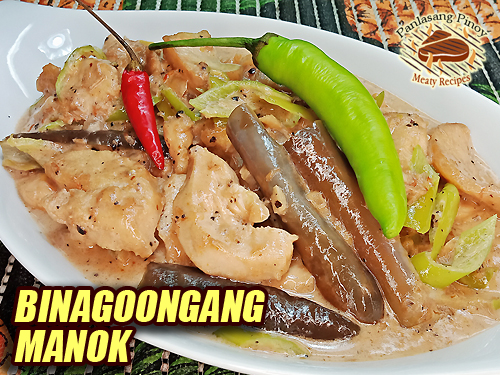

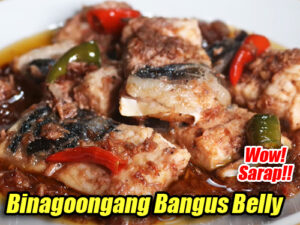
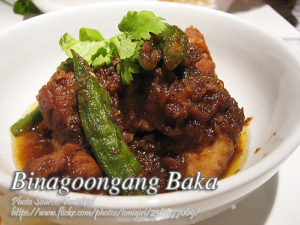
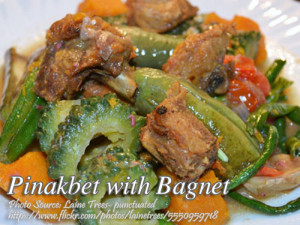
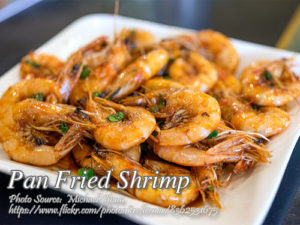
San ginamit yung eggplant?
Hi Ruth, sorry for the typo. The instructions is corrected already. Thanks for letting me know!
Hi Manny! thanks for the recipe. Can I use fresh shrimp paste instead of the cooked one?
Hi Marissa, sure you can but you have to saute it first along with the garlic and onion before putting the chicken.